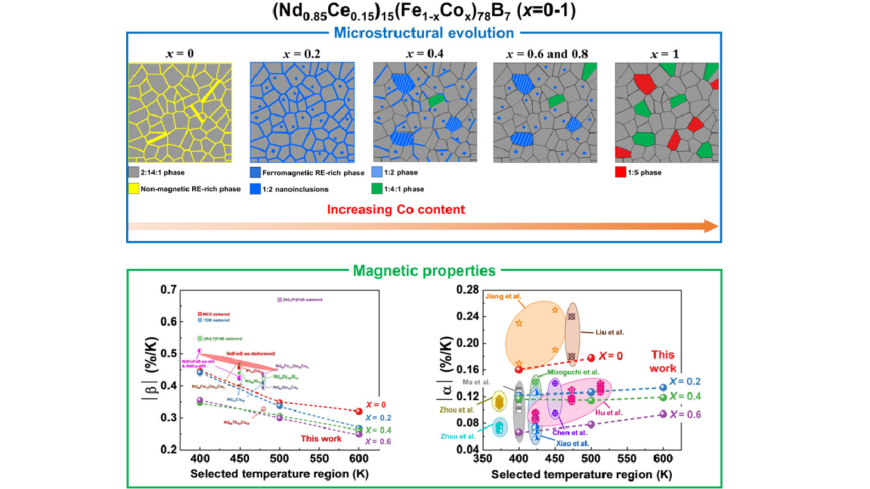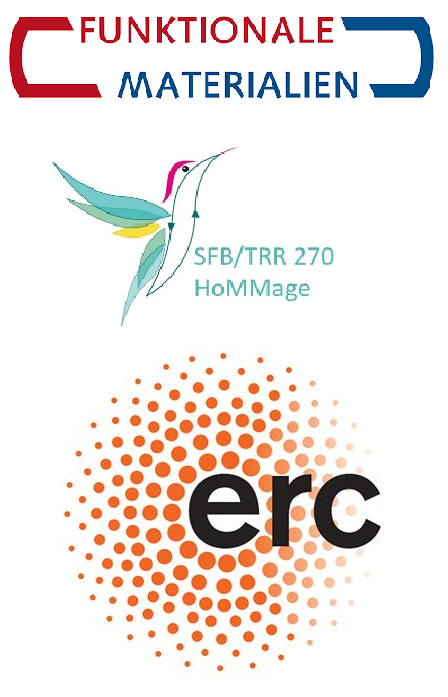Microstructure, coercivity and thermal stability of nanostructured (Nd,Ce)-(Fe,Co)-B hot-compacted permanent magnets
Joint publication of CRC/TRR 270 and partners from Beihang University (China)
2022/06/03

Y. Wu, K. P. Skokov, L. Schäfer, F. Maccari, A. Aubert, H. Xu, H. Wu, C. Jiang, O. Gutfleisch
Acta Materialia, 235, 118062 (2022).
We report on microstructure, hard magnetic properties and thermal stability of nanocrystalline (Nd0.85Ce0.15)15(Fe1-xCox)78B7 (x = 0 – 1) hot-compacted permanent magnets. At lower Co concentrations (x < 0.3), the substitution of Fe by Co changes the composition of grain boundary phase from non-magnetic (Nd,Ce)2Fe1 to magnetic (Nd,Ce)1(Fe,Co)2, leading to the degrading of the coercivity. At x ≥ 0.6, the grain boundary phase is no longer observed between the nanocrystalline grains, resulting in strong magnetic coupling of constituent phases. With the further increase of Co concentration (x>0.6), additional RE(Fe,Co)2, RE(Fe,Co)4B and RECo5 phases are gradually formed in the magnets. A new type of microstructure with nanograins of RE2(Fe,Co)14B phase, RE(Fe,Co)2 phase and RE(Fe,Co)4B phase, with partial or without grain boundary phase shows good thermal stability (x = 0.4 and 0.6). In (Nd0.85Ce0.15)15(Fe0.4Co0.6)78B7 magnets, the absolute values of temperature coefficient of coercivity can reach 0.3 %/K within the temperature range of 300 K – 500 K, and it exceeds 0.23 %/K for the temperature range of 300 K – 650 K, indicating a promising method for designing highly thermal stable permanent magnets.



